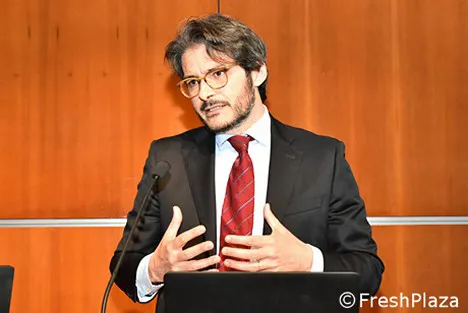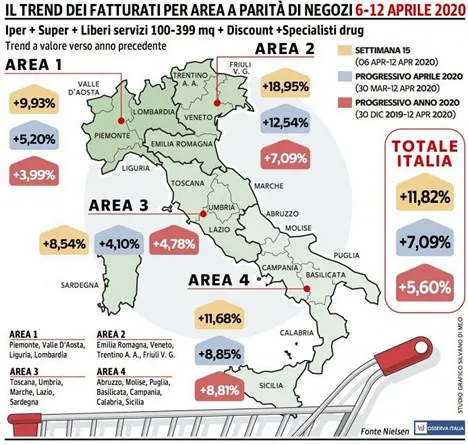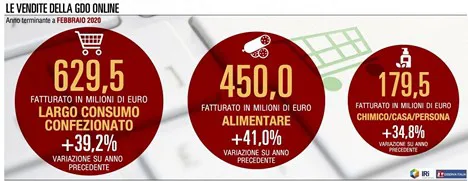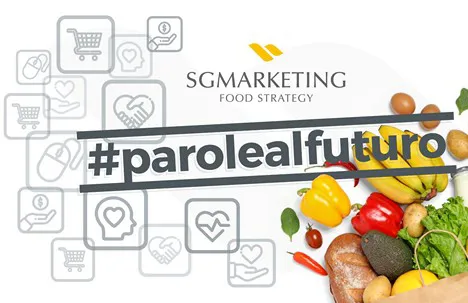The impact of the COVID-19 pandemic is comparable to that of a war and could last longer than the crisis itself. We will need a long time, some are saying 12 months, to see an overall recovery of the market.
 Salvo Garipoli
Salvo Garipoli
FreshPlaza talked about it with SGMarketing Salvo Garipoli, who provided some interesting perspectives.
"Due to the current health crisis, we will have to deal with a considerable fall in purchasing power and therefore redefine our concept of 'value for money', which does not only mean saving money, but conveying added value and rationalizing the resources available. It will be essential to reassure consumers guaranteeing high food safety standards and emphasizing origin and traceability. Consumers will also assess purchases differently, as they might prefer packaged produce. But there is more: a focus on Italian products has emerged and we need to maximize this advantage in the post-crisis period."
 Above. Nielsen data for the week of April 6th-12th (Easter week). Sales in modern distribution increased by 11.82% compared to 2019. Source: Nielsen, Osserva Italia
Above. Nielsen data for the week of April 6th-12th (Easter week). Sales in modern distribution increased by 11.82% compared to 2019. Source: Nielsen, Osserva Italia
"Health and trust" will be the key words for communication
"The fresh produce sector is by nature associated with health and well-being, as shown by the increasing sales of purchases known for their vitamin content (oranges, apples, lemons and kiwifruit). We need to seize this opportunity and focus on effective communication for the future."
"When it comes to communication, the challenge is based on 'Human to Human'. Maybe for the first time in contemporary history, the Coronavirus hit people regardless of their economic, cultural and social status. Brands and products must reliably interpret the needs and values shared by the online and offline community."
 The e-commerce trend in the big retail chain. Source: IRI, Osserva Italia
The e-commerce trend in the big retail chain. Source: IRI, Osserva Italia
"The current crisis has pushed online sales. In the weeks between February 17th and March 8th, the growth was of 73.5% (IRI Osserva Italia). We discovered how practical home deliveries and click&collect services are, though we have also had to deal with the difficulty of managing processes and productivity. The entire chain is required to provide answers in a context that id destined to evolve."
 We could summarize what was said above as follows:
We could summarize what was said above as follows:
1. #VALUE FOR MONEY. The economic crisis will lead to a reduced purchasing power. How to intercept this trend? What role should brands have and how much space should private labels have? Companies will have to rethink sizes and packaging options so consumers can spend less without giving up quality.
2. #REASSURANCE. Consumers need guarantees as regards food #SAFETY now more than ever: origin, traceability and certifications will need to be highlighted. In this context, #ITALIANNESS and #LOCALISM will play an essential role.
3. #HEALTH CONSCIOUSNESS. Consumers will prefer healthy products naturally rich in vitamins to the benefit of the fresh produce sector and the organic segment in particular.
4. #HUMAN TO HUMAN. Brand communication will need to get "closer" to consumers asking them to join communities founded on shared values.
5. #DIGITAL. Smart-working, home-schooling, home delivery, click and collect... the digital world has pushed itself into the lives of people. The digital revolution, which was already underway, accelerated further and found some companies unprepared. The supply chain should be reorganized to reach consumers with a more efficient communication.
